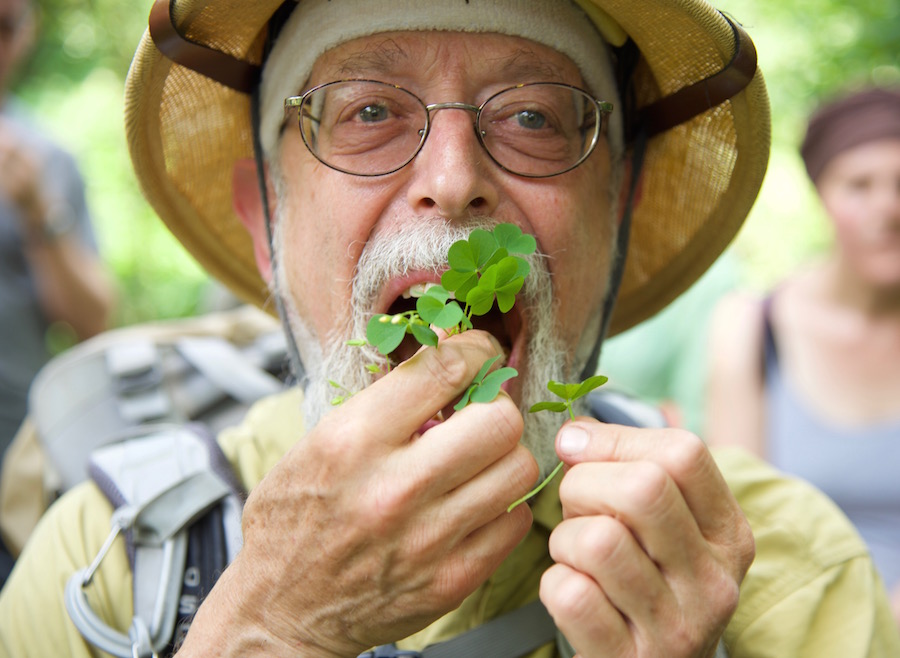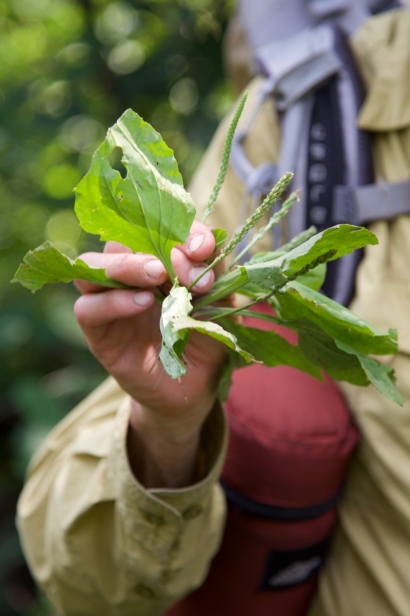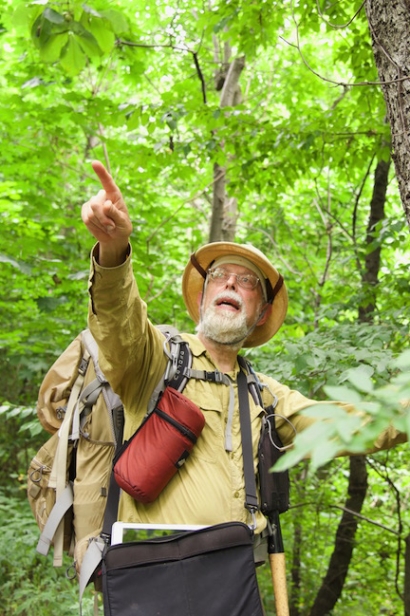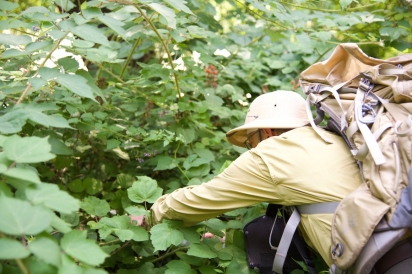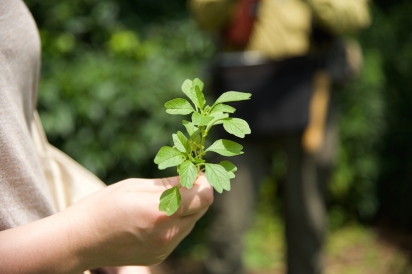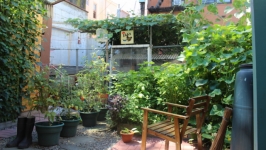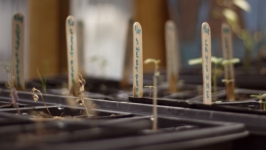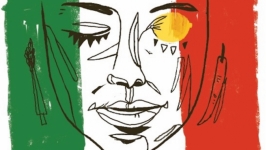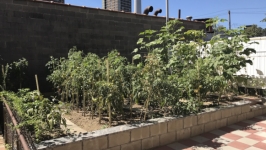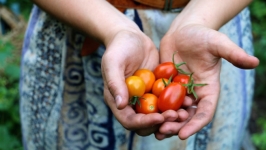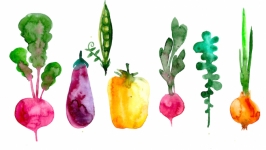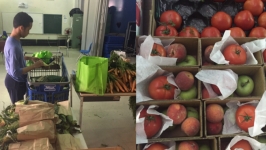The Food of the Forest
As humanity’s food sources have evolved from hunting and gathering to local farming then to restaurants, grocery stores and global commodities markets, we have applauded our innovations. Yet one of today’s most innovative food sources is ironically anything but new. Foraging—the original food source—is making a big comeback after a few millennia of dormancy and professional foragers such as Steve Brill and Marie Viljoen are leading the way in New York City.
“Wildman” Steve Brill was ahead of the trend for New York foraging, having begun in the 1980s. Brill, at the time, was interested in cooking, and would often go to different neighborhoods looking for new and interesting ingredients. He describes biking through Queens and coming across a group of Greek women picking grape leaves. He ultimately joined the women and brought home his own bag of leaves, which he then stuffed and ate.
He was hooked on foraging. With a few years of practice and one misdemeanor charge (for eating a dandelion in Central Park; he has not since been bothered by the law), Brill was leading tours and writing recipes under the Wildman nickname. He continues today with his 13-year-old daughter and foraging partner, Violet.
Viljoen, owner of the foraging/gardening blog 66 Square Feet, had been familiar with plants from a very young age, having grown up with a mother who was gardener. She describes recognizing edible plants during walks when she was child, and then picking them for later use. “It was a very natural progression,” she says, “going from someone who liked plants and eating things to finding wild ones.” Her familiarity with plants led her into a career as a garden designer, and ultimately, a professional forager.
For both Viljoen and Brill, being a professional forager means leading foraging walks and talks throughout the five boroughs (and Brill often visits Westchester and Connecticut too). On one of these walks, you can expect to learn to identify new plants, taste your different finds and learn a bit about what you’ve found, but Steve and Violet Brill often like to supplement their walks with music and a number of jokes. It’s difficult to get through one of their walks without a few plant puns and a rendition “Habanera” from Carmen on the “Brillophone”—an instrument achieved by changing the size of the opening of one’s mouth while clapping in front of it. Viljoen and Brill both emphasize the culinary aspect of foraging in their walks and work, however. Viljoen’s walks include discussions about what dishes you might make with your finds, and Brill often shares some of his homemade creations, such as curried sunflower seeds or plantain weed chips.
While Brill also includes medicinal plants on his tours and is often invested in the health aspects of foraged food, Viljoen sees foraging entirely as a way to augment culinary creativity. “I’ve always liked to cook,” she says. “Having new ingredients to play with in the kitchen is just very exciting. We’ve been using the same spices and herbs, more or less, for centuries.” As she sees it, because the only plants we use in cooking are cultivated, we’ve limited the diversity of our ingredients. Many more plants to be found foraging can be used in plenty of new and creative recipes.
One example is Japanese knotweed. Invasive and abundant (especially in Pelham Bay Park), it’s often cut down as a weed; nevertheless, it makes for many creative recipes. Recipes for Viljoen’s Japanese knotweed soup and lamb and knotweed curry can be found in her book (also called 66 Square Feet) each capitalizing on this abundant plant and its unique sour flavor. Brill doesn’t miss out on the knotweed action either, with a recipe for knotweed sherbet on his website.
In addition to the culinary creativity afforded by knotweed, eating it helps the local ecosystem: Japanese knotweed is an invasive plant. It steals sunlight, water and other nutrients from native plants, while harming local wildlife and reducing biodiversity. By foraging the knotweed, you not only get an interesting meal, but you save the NYC Parks Department a little cash by doing their weeding for them. Many other commonly foraged plants, such as lamb’s quarters and milkweed, are considered weeds and/or invasive, so they’re not only renewable, but it’s beneficial to an ecosystem to pick them.
Viljoen and Brill are careful not to forage the less-abundant species, and to only pick what they know is renewable. Viljoen also tries to avoid what she refers to as “collateral damage,” which is the inadvertent destruction of plants simply by stepping on them while foraging for others.
Before you can begin worrying about which plants are invasive, which are native, which are abundant, which are rare, etc., you first need to learn how to forage, which Brill and Viljoen agree is a somewhat time-consuming process. Viljoen describes her own learning to forage as simple “pattern recognition”: “It’s no more difficult to recognize purslane than it is to recognize celery; it’s just not part of the standard culture.” Says Brill, it’s a matter of becoming familiar with the desirable plants, and then teaching yourself how to distinguish them from their surroundings.
With proper foraging skills or a proper guide, the Bronx is a pretty extensive foraging playground. Available plants depend greatly upon season, but Brill and Viljoen both suggest Pelham Bay Park as a spot that can yield some finds year-round. Viljoen, who occasionally leads foraging walks in Pelham Bay, likes the park for its large number of edible invasives. Viljoen also looks for mugwort, a weed used often for both culinary and medicinal purposes; sumac, whose fruit (called “bobs”) can provide a lemony flavor to food and drinks; and wild black cherries.
Beyond Pelham Bay, Brill also forages in Bronx River Park, where he finds stinging nettles and wood nettles (which lose their stinging properties when cooked) and he likes to venture into Van Cortlandt Park to find wild edibles.
Despite being as old as humanity, foraging has most definitely not died out. Viljoen and Brill have become catalysts of a growing and innovative culinary and environmental movement open to any New Yorker and Bronxite who can get out to a nearby park. With the limited selection of everyday grocery store ingredients and staple crops, foraging is a way to break tradition and eat something that is truly new.
To take a tour with Steve Brill, check out his site.


